Artificial intelligence can translate calls into other languages in real time, with a photograph it can explain the menu of a restaurant abroad or the captions under a picture. But that doesn’t mean that learn other languages is not important for traveling — to really immerse yourself in the culture of another country. We have long loved exploring new languages by listening to podcasts, watching films and trying to engage in conversations when conferences and tech fairs take us abroad. But a bit of basics are needed apps for learning languages are convenient and simple to use: so we jumped at the chance of this one review to try out the new features of Babble.
After testing it for some time (alongside other applications that will remain nameless!), we came up with this idea: Babbel is the app for those who are serious about languages. While others offer a kind of “language learning game,” Babbel has features designed for those who have a real need to learn a new language — including live conversations with native speakers. We tell you everything in this review of Babbel and its most recent innovations.
Our review of Babbel
Launched in 2007, Babble is among the very first apps in the world dedicated to language learning. And it has been doing so with a team of expert linguists behind the scenes for more than fifteen years now. However, many curious people who want to learn new languages have never tried it for one simple reason: It does not have a free version.
After trying the application for seven days, in fact, you have to choose a subscription plan. As explained on the site, prices vary greatly depending on how much you pay:
- Every three months, the monthly cost is 11,99 euro
- Six months to 8,99 euro monthly
- One year a 5,99 euro per month
- If you pay for “Lifetime” access, you spend 299,99 euro to never have to renew it again.
Compared to other apps, which are free but have options for monthly payments, the cost is quite high. And this without counting the live lessons — which we’ll tell you about later. But right from the start, Babbel makes it clear that she’s not like other apps: she means business.
An intuitive — and almost “austere” interface
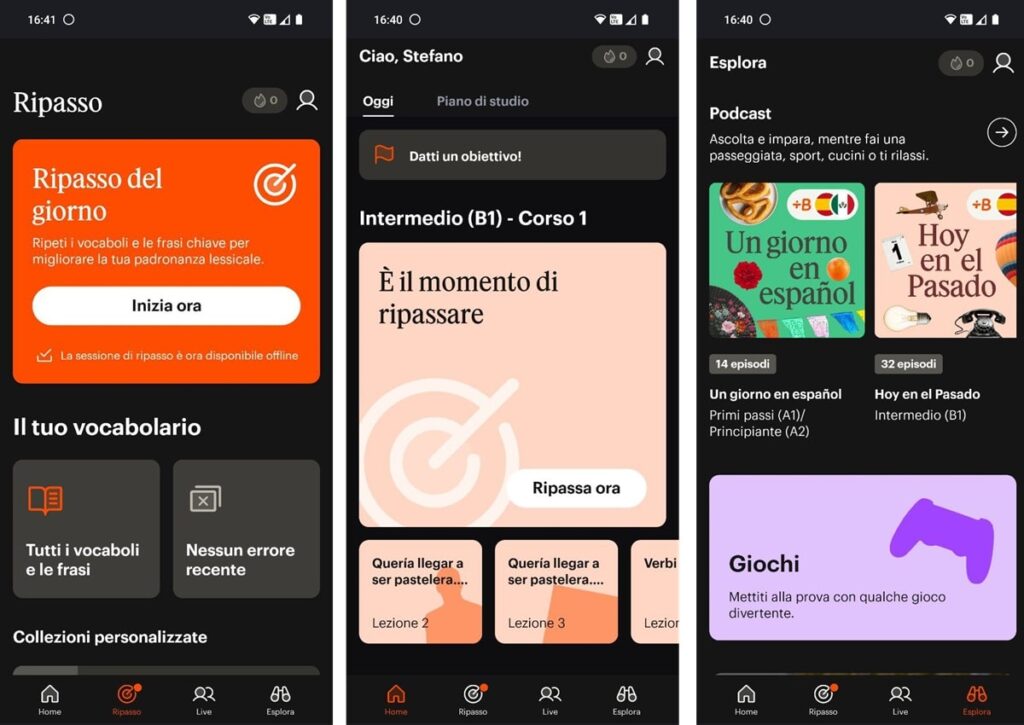
Opening the mobile application or the browser website, we immediately understand that Babbel has a much more “didactic” approach compared to other applications. If others aim to make learning a game, with constant challenges and bright colors, Babbel does what it should do any good private teacher. With its simple style, based around the color orange and minimalist graphics, it seems to tell us that it won’t work hard to keep us attentive: it’s us who need to learn, we who have to put in the effort.
In fact, the app simply asks us which language we want to learn among the 14 languages present. We chose it Spanish, in which we are sufficiently knowledgeable to understand the level of the lessons, but poor enough to really need them. But you can also choose between French, German, Italian, Russian, Portuguese, Turkish, Dutch, Swedish, Norwegian, Danish, Indonesian, Polish and English.
Once the language has been chosen, a series of questions help us to fit into the right level among those of the Common European Framework of Reference, from A1 (beginner) to C1 (advanced), depending on the language. We didn’t want to overestimate our ability, ending up in a B1 in which we are quite comfortable – better to review some notions already acquired than not understand anything.
At this point, you find all of Babbel’s features in one set of screenshots which, we must admit, we found simple to navigate even at the beginning of this review’s tests. Both on the mobile app and on the website you will find a home screen with the next lessons to follow, a review section (even if the app will regularly offer this to you), live conversations with native speakers and a series of really interesting bonus features . And the most interesting thing is that you can go at your own pace.
Review: What kind of learning does Babbel offer?
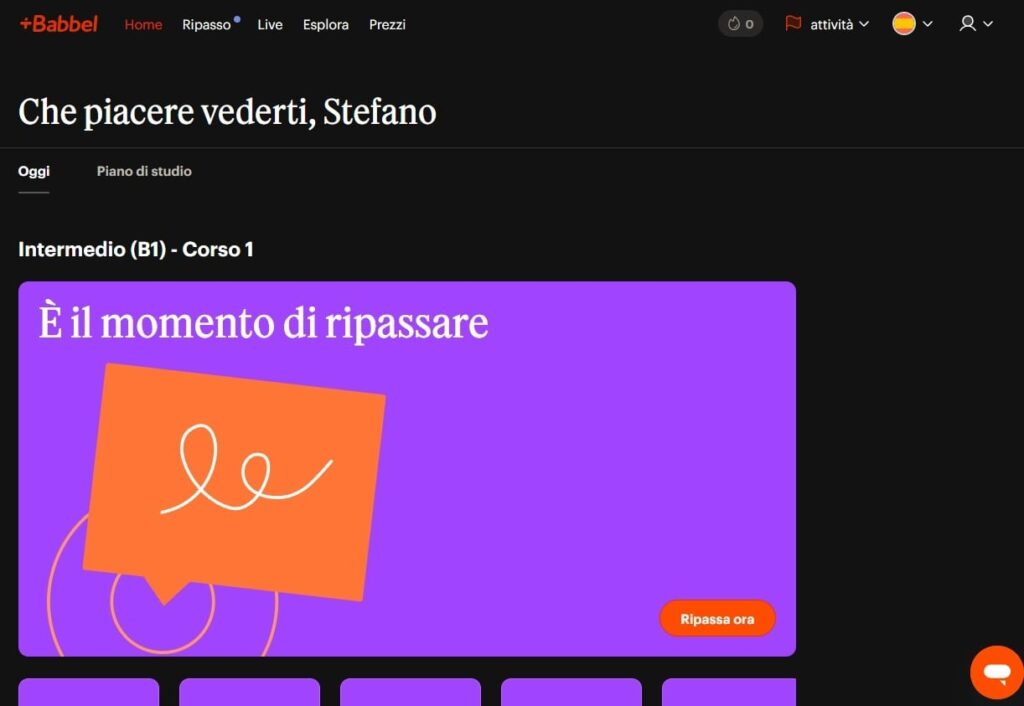
The heart of learning in the Babbel app is the lessons, the most intuitive (and most copied) feature. They have a duration of about 5-10 minutes each, although it varies greatly depending on your level. In the lessons you will find very intuitive teachings in the language: the conjugation of a verb, the use of words and sentences, grammatical rules. Usually, there isn’t a lot to learn in any given lesson: just a couple of facts, followed by exercises to understand the topic.
Exercises include follow-up and multiple choice questions, as well as listening and vocal repetition sessions using the App voice recognition system. Babbel recently implemented AI-based recognition designed to recognize pronunciations and dialects. This function, for the moment, is only available for English, French, Italian, European Spanish and Latin American. But it seems to work well: by deliberately mispronunciation, the AI was able to recognize the mistake — something that doesn’t always happen on other apps.
We found the easier lessons than we thought: on average, we make few mistakes and correct them as soon as the lesson is over. But it doesn’t depend on the paucity of the contents, which actually seem interesting to us. However, Babbel teaches us little information per lesson, so that we can learn it more easily. A method that is perhaps less “challenging” than rival apps, but we think it works very well for remembering lessons.
Every now and then, Babbel alternates lessons with reviews, which you can choose to do differently: listening, speaking, writing or completing the exercises. In your “Study plan” you can see your progress. Additionally, you can set weekly goals in your profile. In this case, you can explain to Babbel why you want to learn a language and what level you want to reach, as well as the time it will take to learn. Babbel will suggest how many minutes per lesson and how many lessons per week to do to reach your goal. You can also set notifications to stay on track.
Lots of extra features
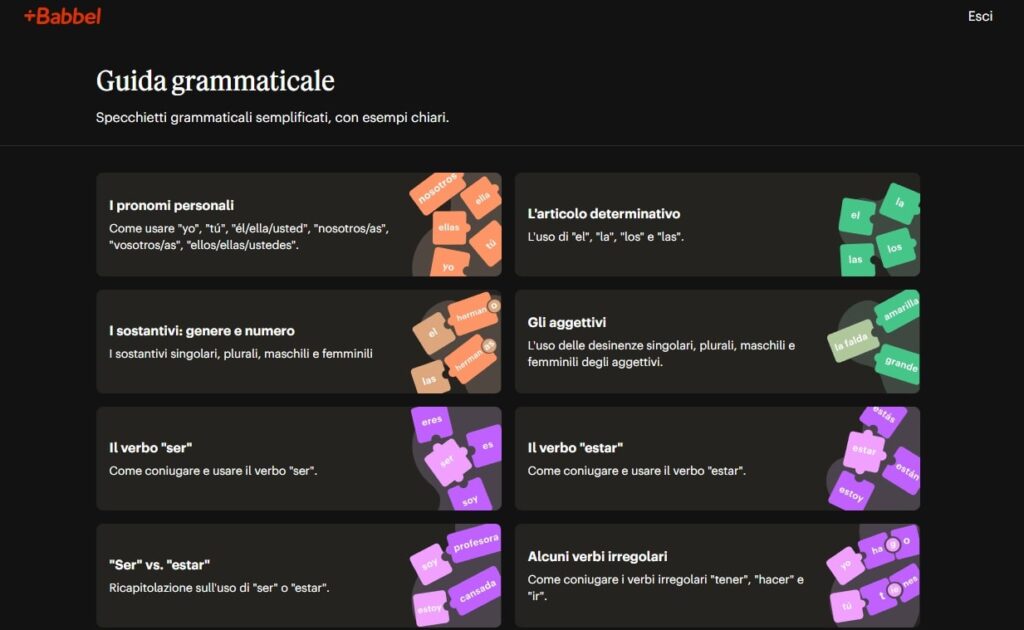
In addition to the classic lessons and reviews, there are several additional features in the “Explore” section of the app. As the Grammar Guidewhich contains short, clear grammatical explanations on topics such as personal pronouns, irregular verbs, and adjectives, supported by numerous examples.
Very useful for reviewing the section before a trip Daily Conversations. You can choose a topic (Greeting to a neighbor, Introducing yourself to someone) and then listen to typical conversations. You can also respond in conversation, with a color indicator showing how good your pronunciation is.
To these are also added the podcast in lingua to listen to. We listened to some episodes of “Hoy en el pasado”, where an event is told for each day (there is an episode for each day in July). They can be a good starting point to then move on to listening to actual podcasts or series in the language.
And then there are language games and Babbel’s magazine, which contains articles in Italian that talk about the language you are studying. For example, articles about the names of body parts, sayings about silver, animal names and more.
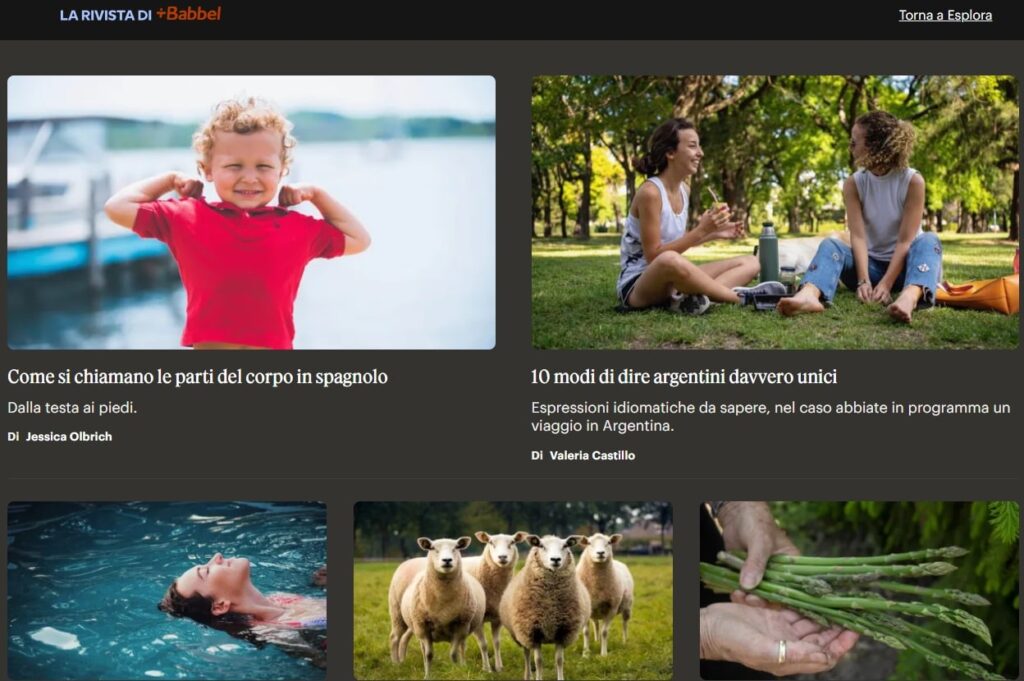
All interesting features, divided by level of knowledge to help you orient yourself in a new language. But the feature that makes the difference is the Live conversations.
Review: Live conversations are Babbel’s ace in the hole
As part of your subscription you are entitled to two free live lessons to try out this innovation. After that the prices rise:
- A month costs 79 euro
- By paying every three months, the monthly price drops to 56,33 euro
- Every six months a 48,16 euro
- For one year, you will pay 39.91 euros per month
But if you have tempo to do it — and you manage to overcome the embarrassment of the first lesson, the price (especially the annual one) will seem well spent. You can do as many lessons as you like, in groups of up to six students. Filter by level, days, times. After that you will be on video with a certified teacherwho will be able to give you direct feedback on your work.
Lessons last, on average, 55 minutes. And for this type of service teachers usually ask (rightly) at least twenty euros online — you will quickly repay your subscription. The quality varies from teacher to teacher, but the learning opportunity is huge.
Is it worth subscribing to Babbel?
The answer to this question varies greatly depending on what you want to get out of your language lessons. The opinion we formed after testing this review is that Babbel is not as “fun” as some alternatives: there are no funny stories to practice vocabulary, no leaderboards to help you compete with friends. The whole “gamification” part remains limited: it is an app designed for those who are serious about it. So if you just want to play with languages and learn while having fun, there are other free options to consider.
However, if you want to learn to speak one of the 14 languages supported for work, because you have to move or because a loved one speaks a language you understand little, Babbel’s slightly more scholastic approach pays off. We remember the phrasebook we learned well and we have better focused on some grammatical rules that, with other apps and when conversing during our travels, we had only vaguely intuited.
The added value, however, is given by…






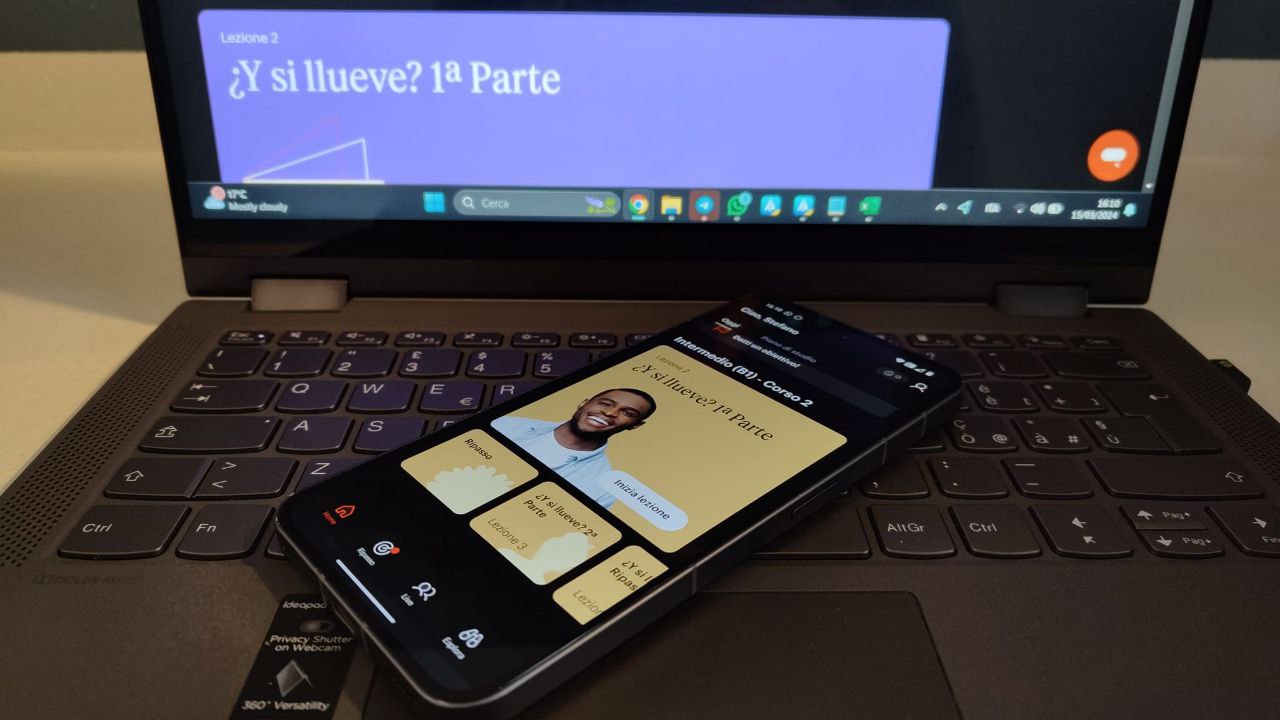








Leave a Reply
View Comments